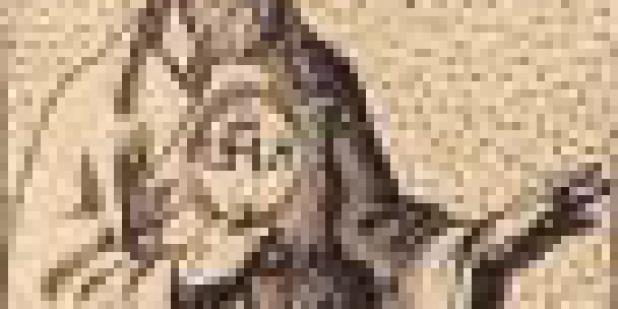Happy Lunar New Year from the USC US-China Institute!
Matteo Ricci and the Jesuits in China
The University of Minnesota will display selections from the Bell Library's extensive collection on Ming China in the exhibition "Matteo Ricci and the Jesuits in China".
Where

Selections from the Bell Library's extensive collection on Ming China will form the basis for this exhibition, which will run through November 10, 2010.
Special feature: the 1602 world map of Matteo Ricci, Zhang Wentao (printer), and Li Zhizao, a Mandarin scholar who collaborated with the Jesuit missionary to bring this incredibly rare map into being.
About The Ricci Map
Kunyu wanguo quantu, or Map of the Ten Thousand Countries of the Earth, is the oldest surviving Chinese map to show the Americas. It is a xylograph (wood block print) on six scrolls of fine native paper, each scroll measuring approximately 1820 x 3650 mm (each panel is approximately 2 feet by 5.75 feet). Li Zhizao (1565-1630), a Chinese mathematician, astronomer and geographer, was the Chinese cartographer who engraved the map. It was printed by Zhang Wentao of Hangzhou, possibly an official printer of the Ming court.
A Jesuit priest, Matteo Ricci arrived in China in 1583 and, with fellow Jesuit Michele Ruggieri, established the first Christian mission. In 1597, Ricci was named Superior or head of the entire Jesuit missionary effort in China. His world map is a true collaboration between the European scholars of the Jesuit mission and the Chinese scholars of the imperial court. Vivid descriptions of the continents, praise of the Chinese emperor, lunar charts, and scientific tables documenting the movement of the planets adorn the map, a unique representation of East-West relations in the early 17th-century.
This Example of the 1602 Ricci Map
This example of the 1602 Ricci Map was purchased by the James Ford Bell Trust and has been loaned to the University of Minnesota for the benefit of the James Ford Bell Library. Recently exhibited at the Minneapolis Institute of Arts, the Ricci map, popularly called "The Impossible Black Tulip" because it is so rare, will be featured in an exhibition at the Bell Library, opening September 15, 2010: Matteo Ricci and the Jesuits in China.
The Ricci map is among six known complete examples of the 1602 printing; this is the only one in the United States. The six examples: Vatican Apostolic Library Collection I; Japan Kyoto University Collection; collection of Japan Miyagi Prefecture Library; Collection of the Library of the Japanese Cabinet; Paris, France (in private hands); James Ford Bell Trust (formerly in a private collection in Japan). The image of the map appears here courtesy of the James Ford Bell Trust.
Featured Articles
We note the passing of many prominent individuals who played some role in U.S.-China affairs, whether in politics, economics or in helping people in one place understand the other.
Events
Ying Zhu looks at new developments for Chinese and global streaming services.
David Zweig examines China's talent recruitment efforts, particularly towards those scientists and engineers who left China for further study. U.S. universities, labs and companies have long brought in talent from China. Are such people still welcome?






